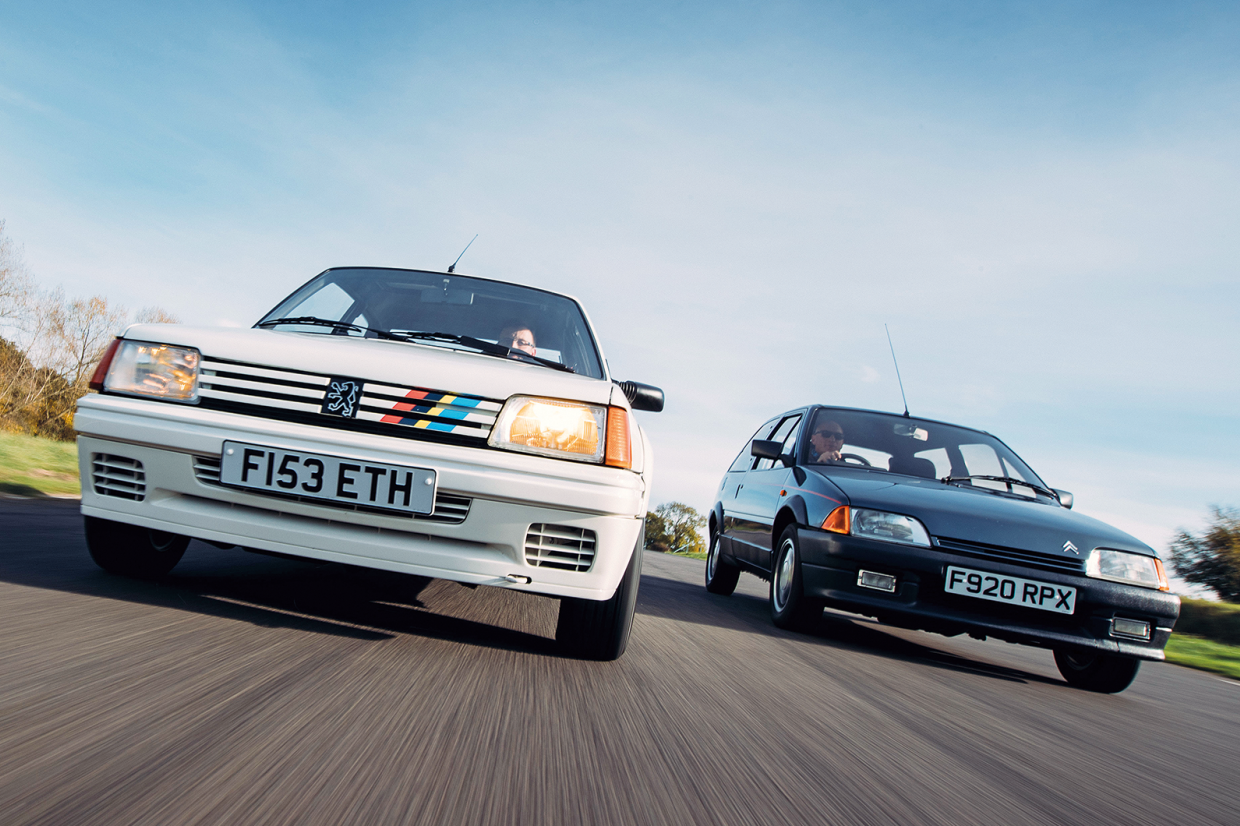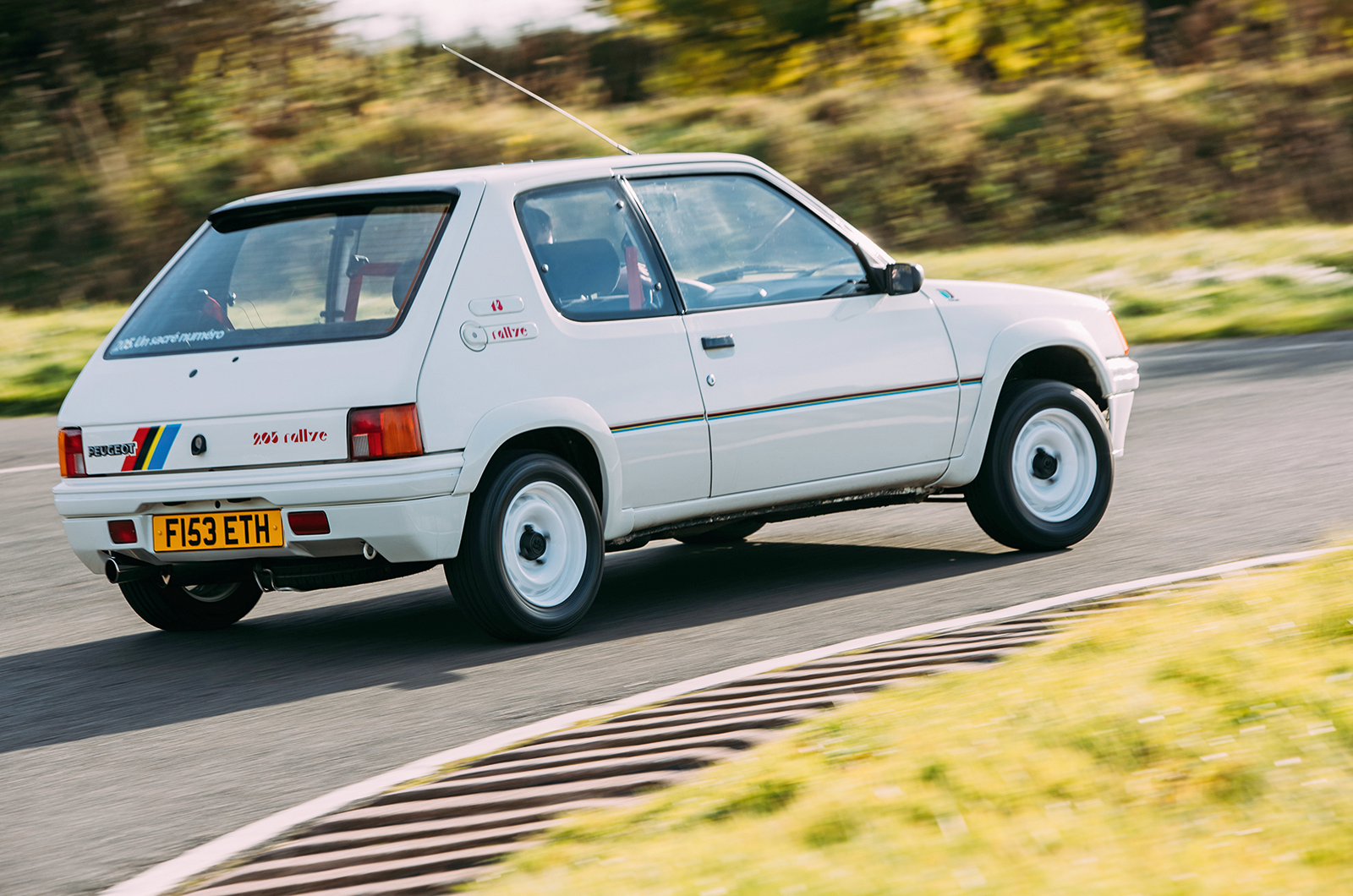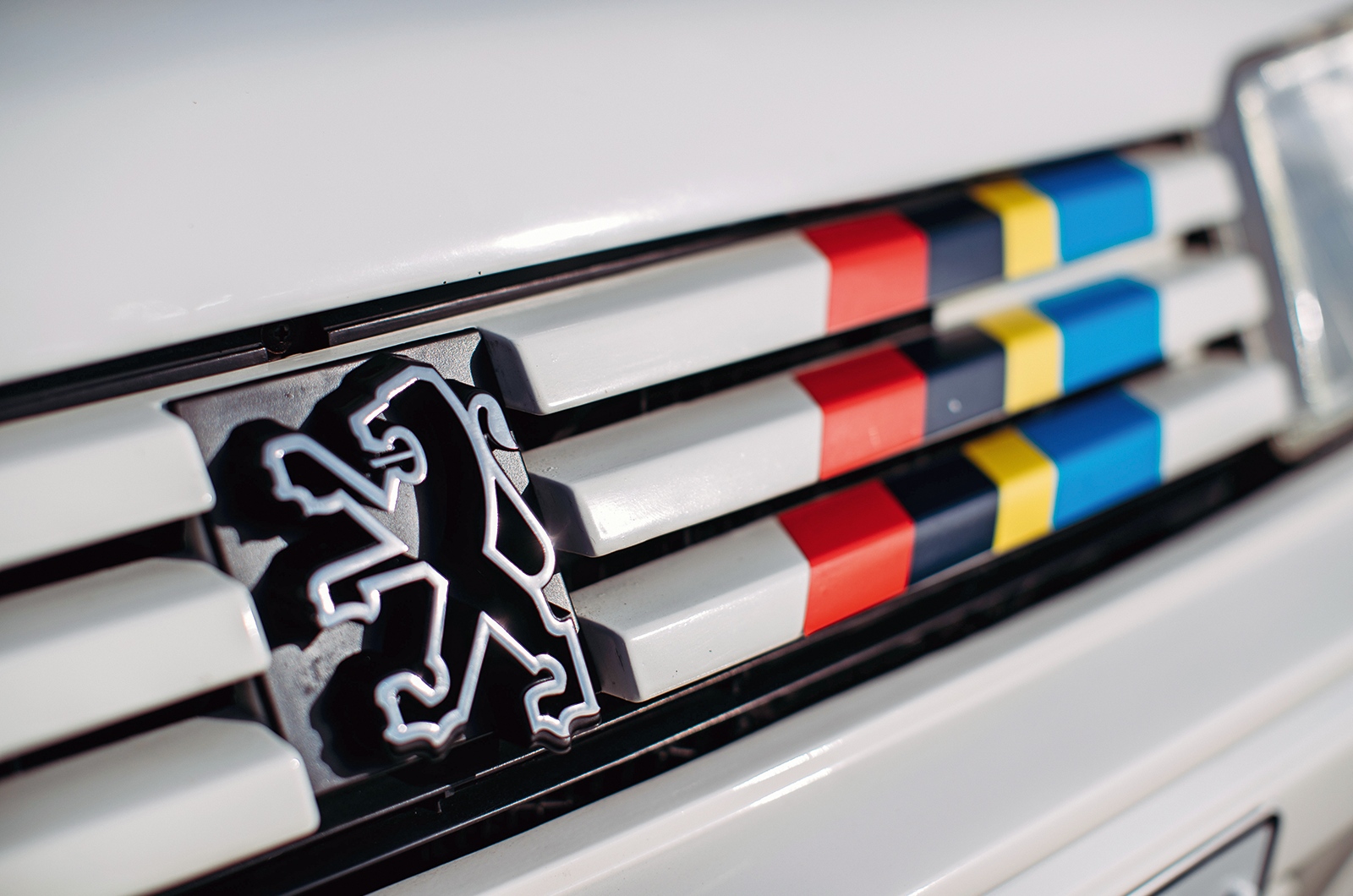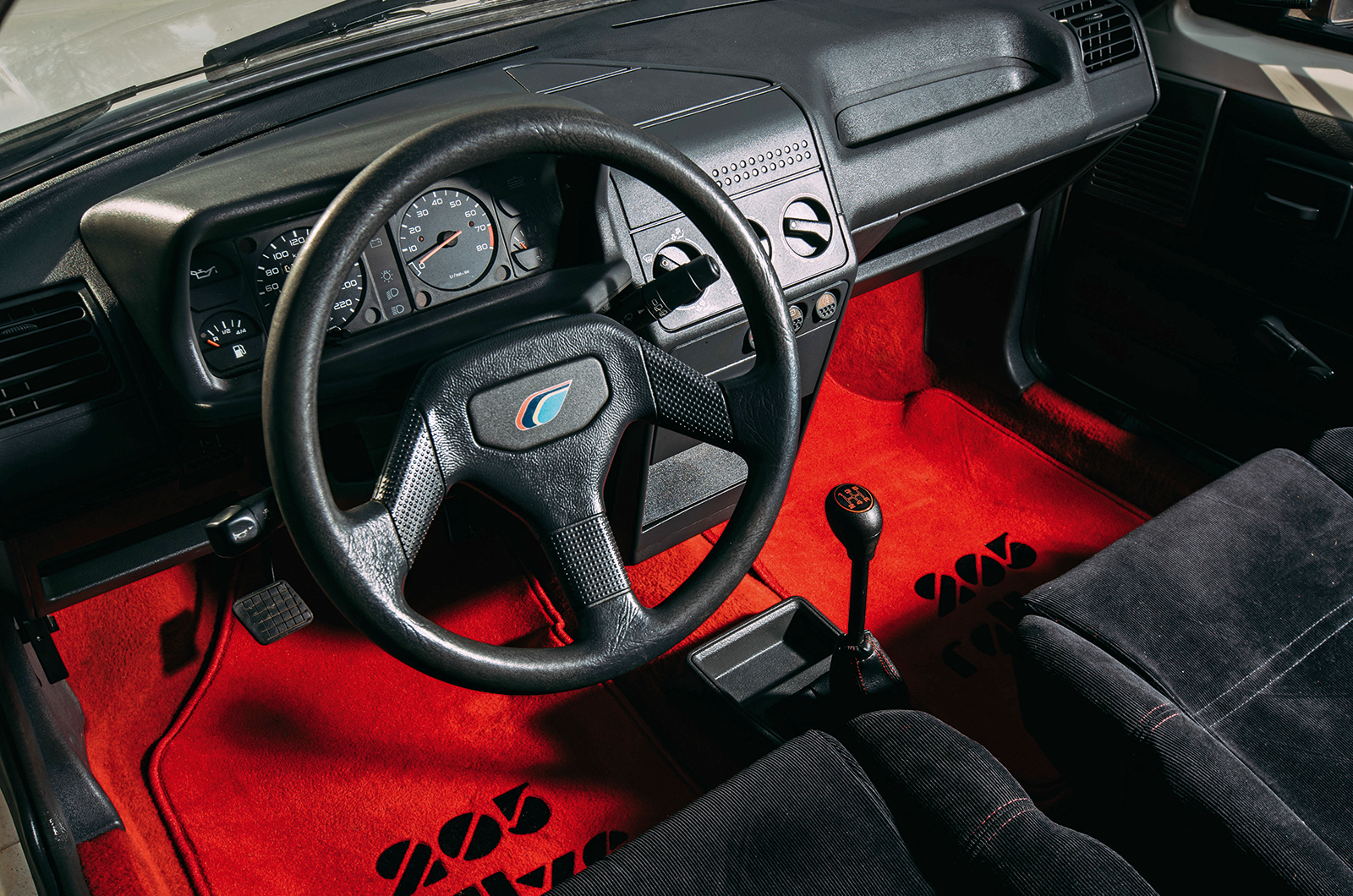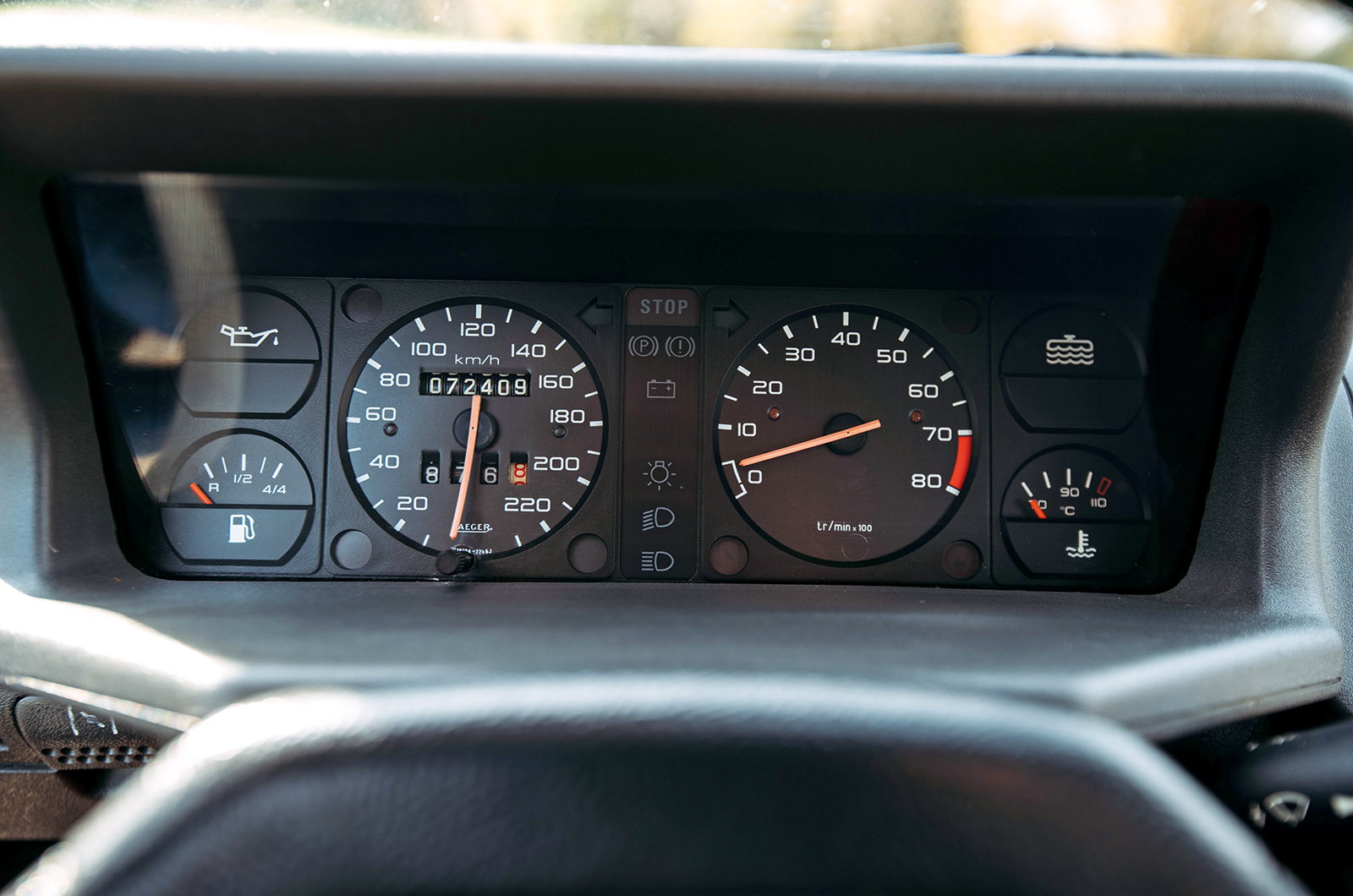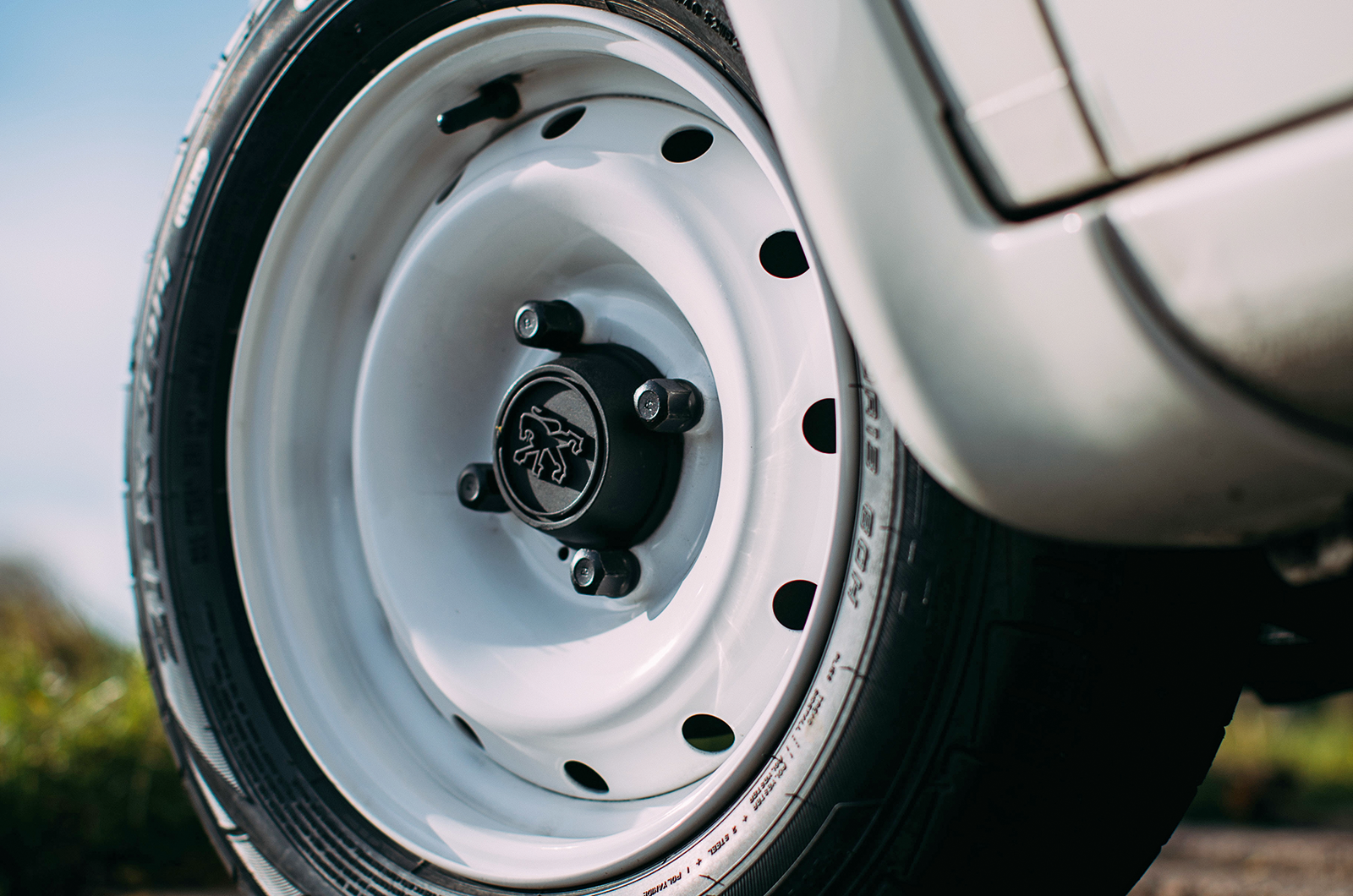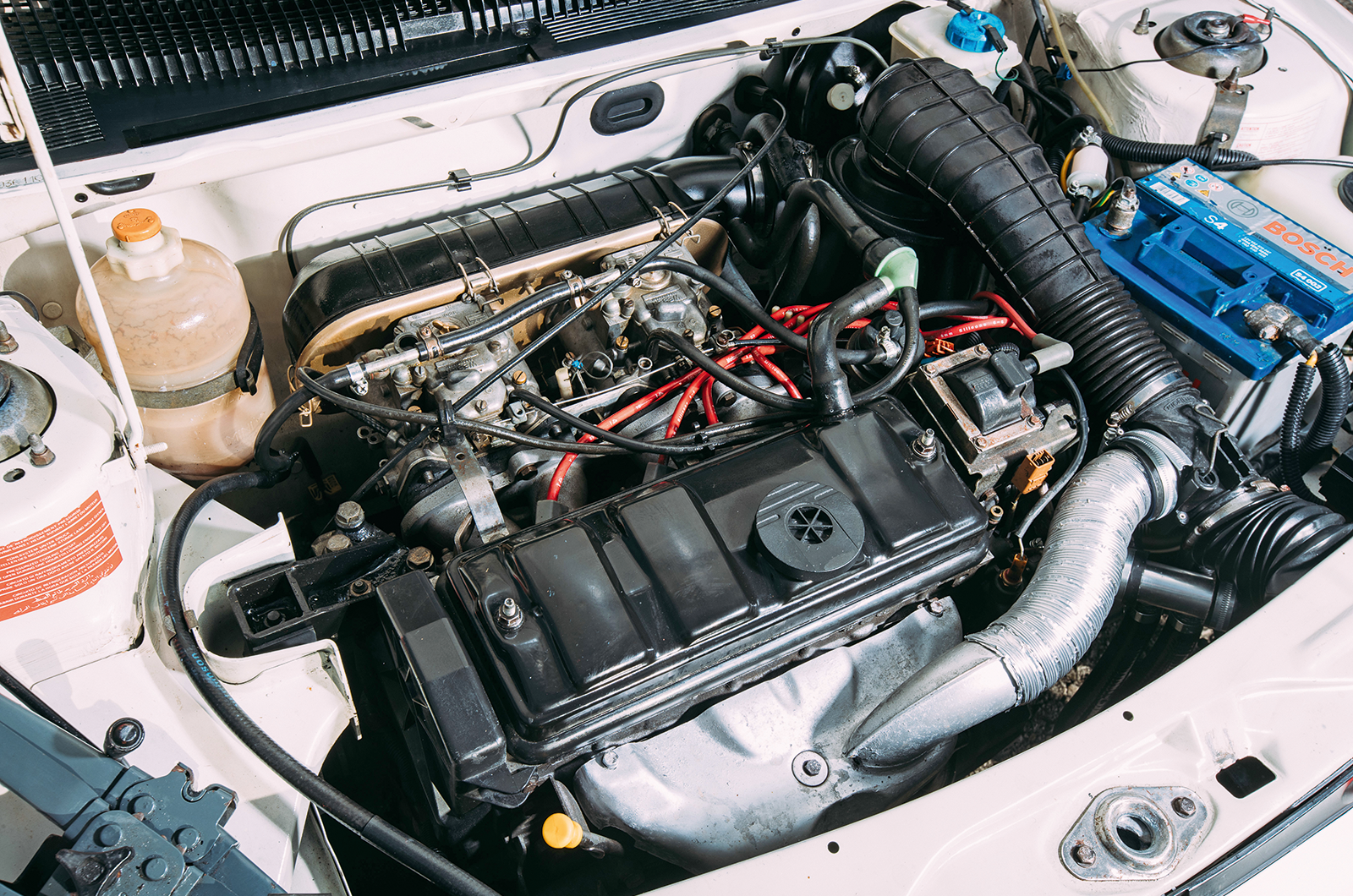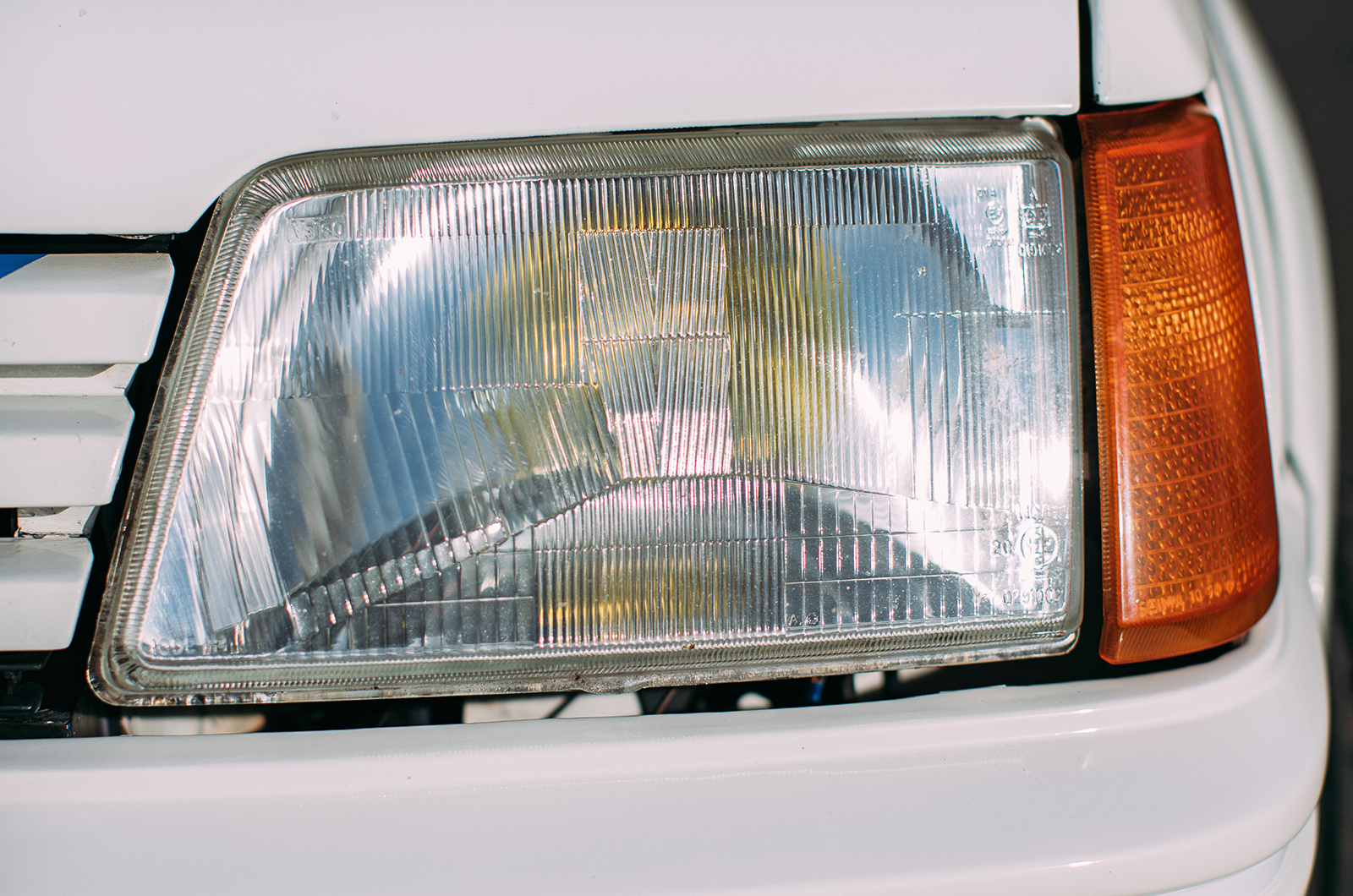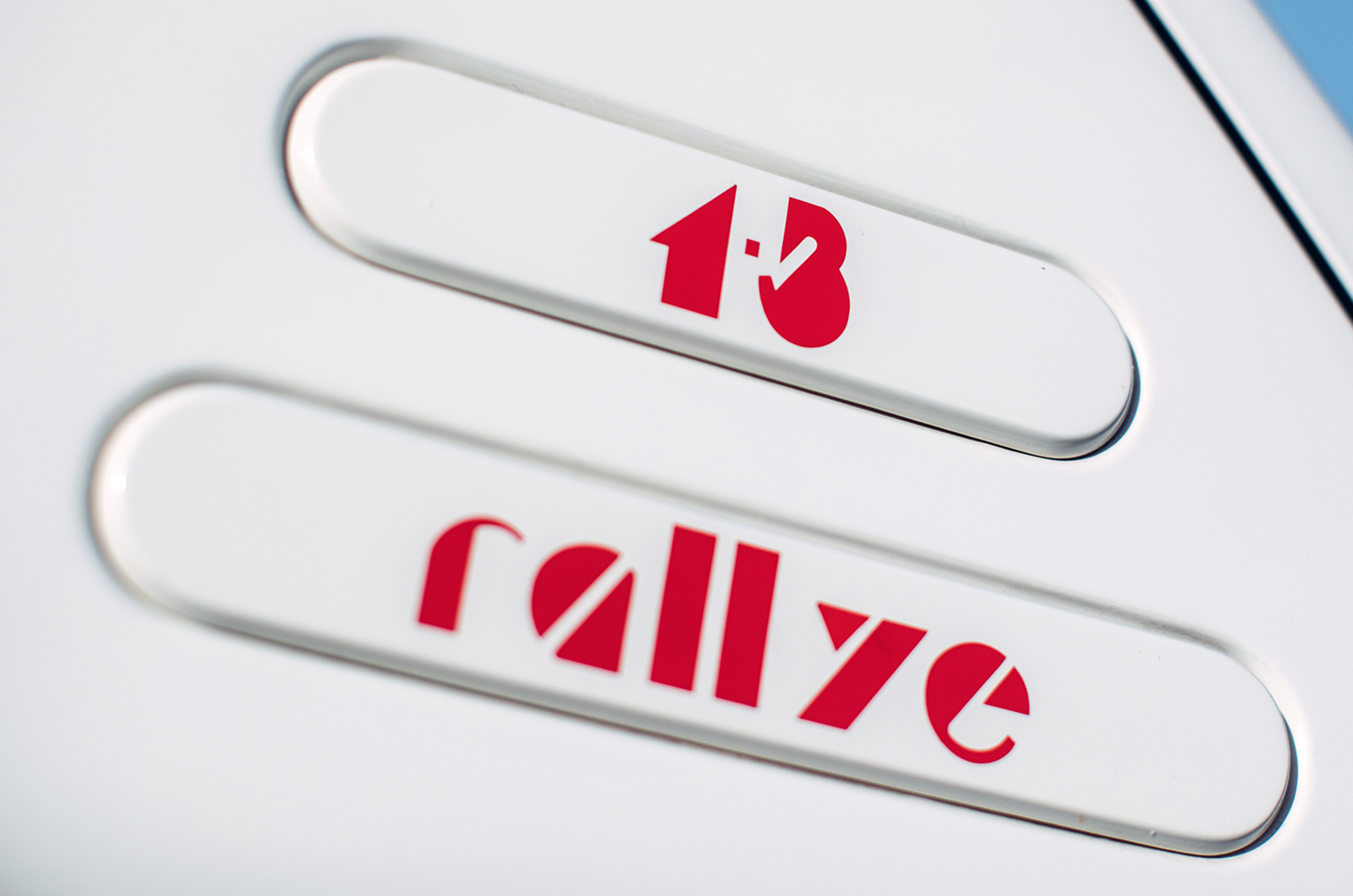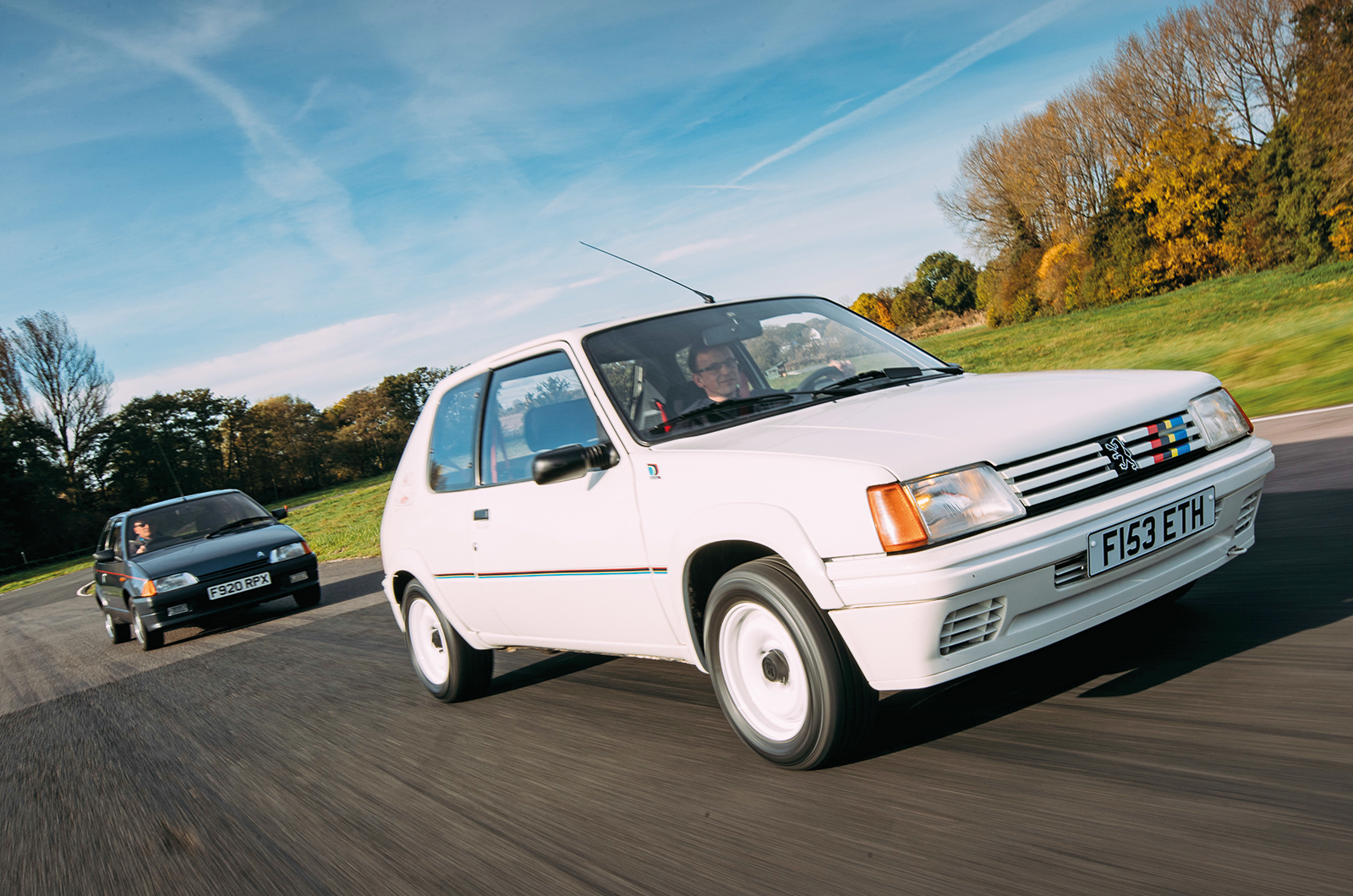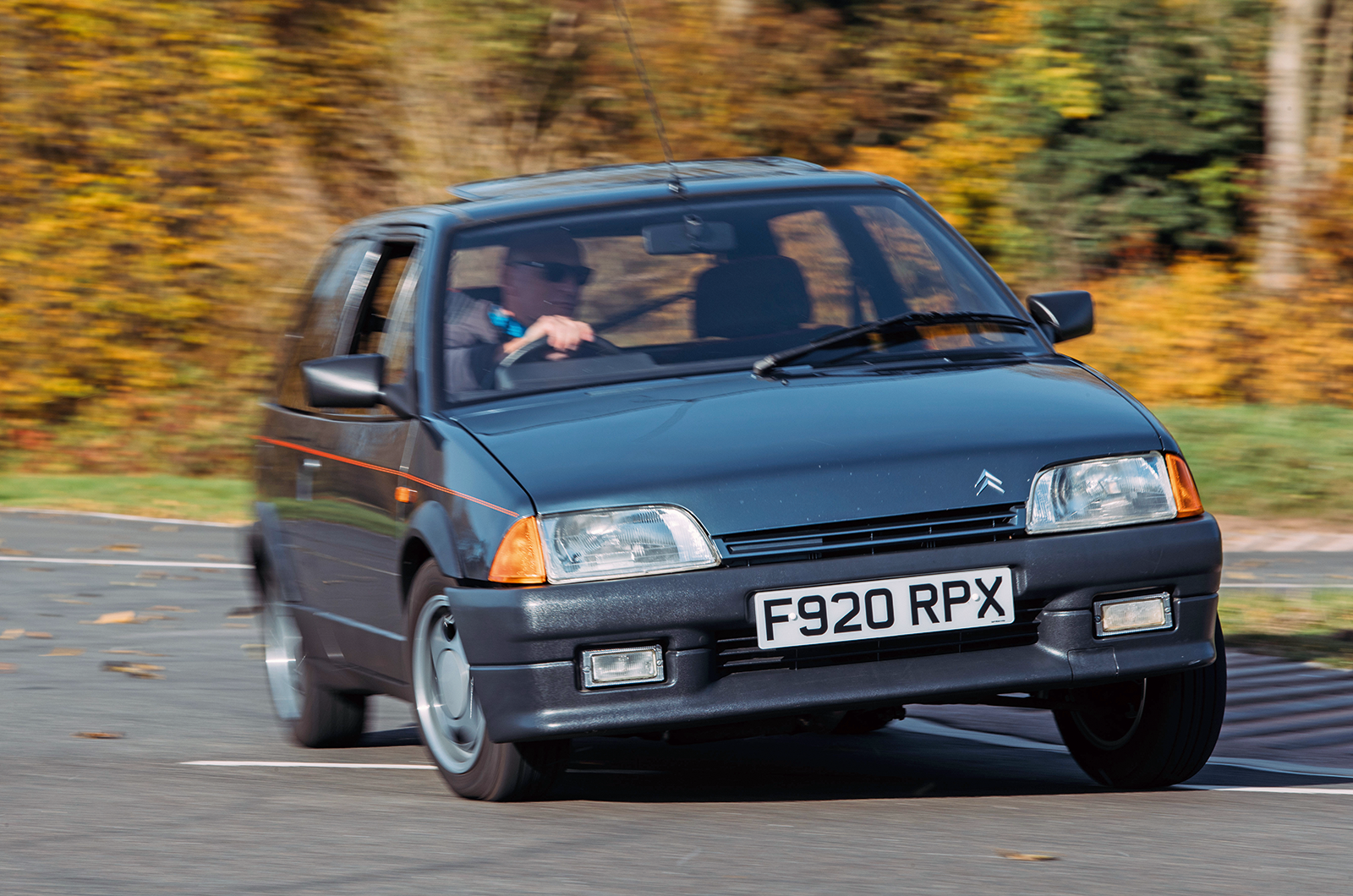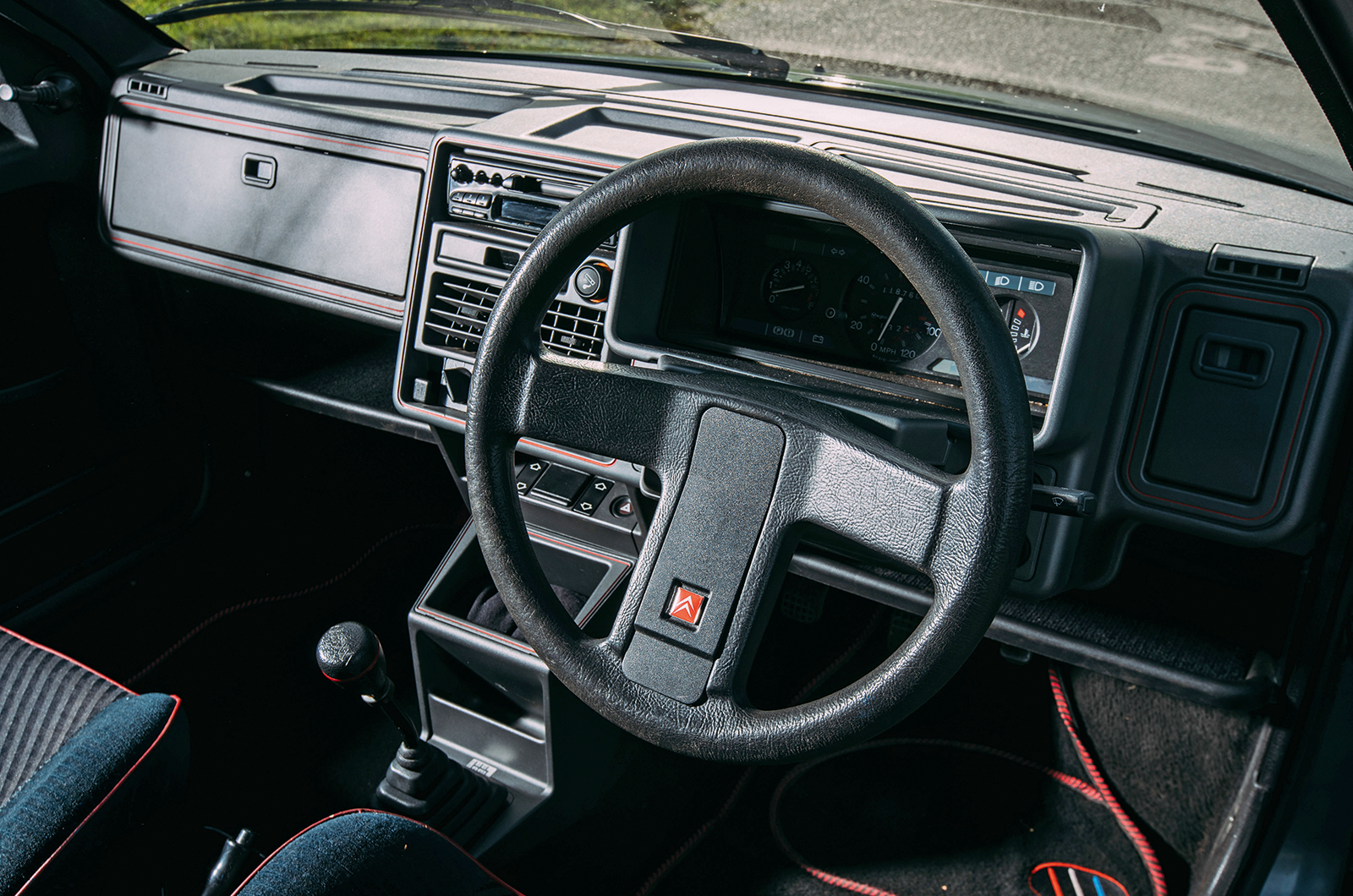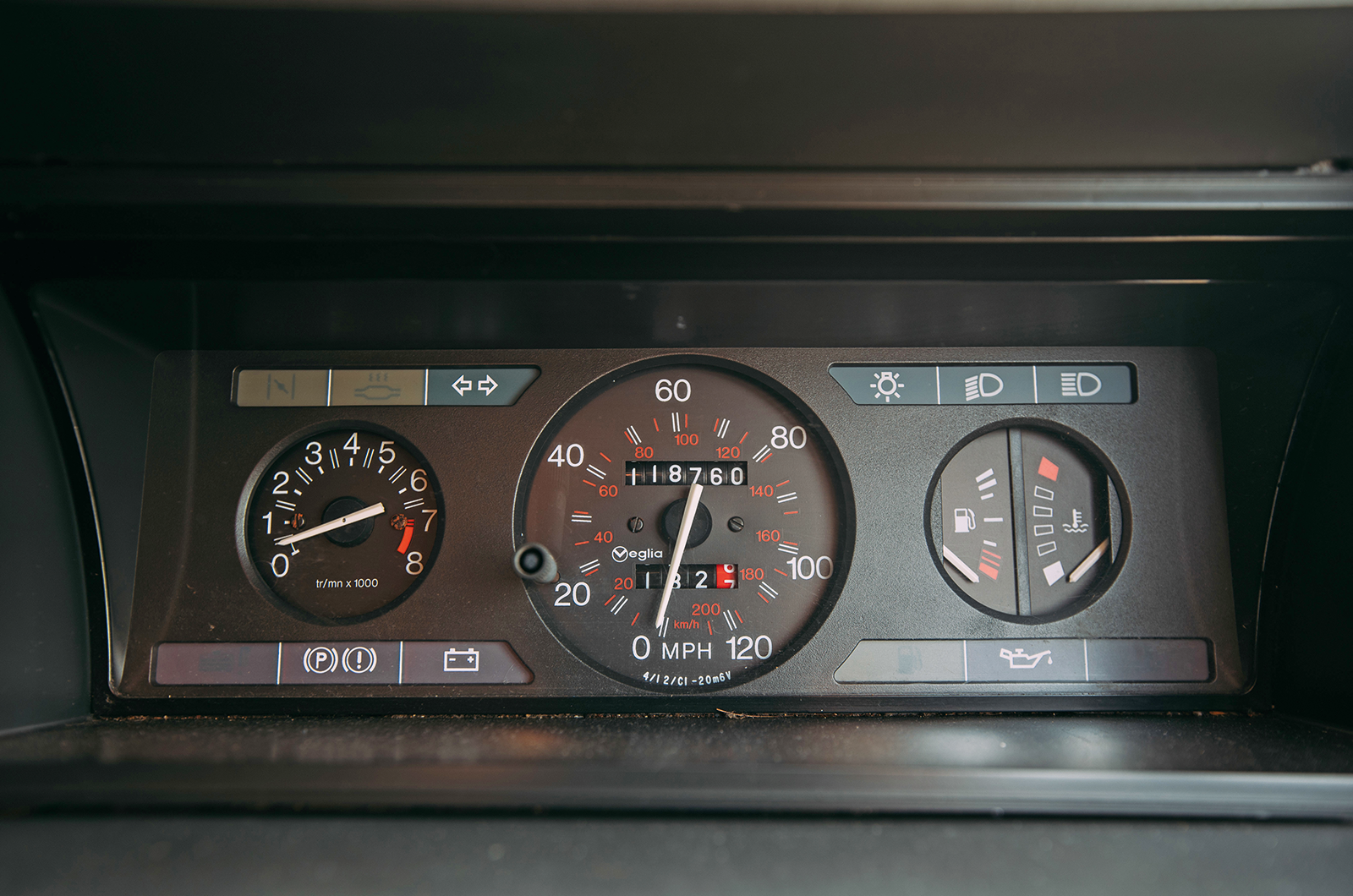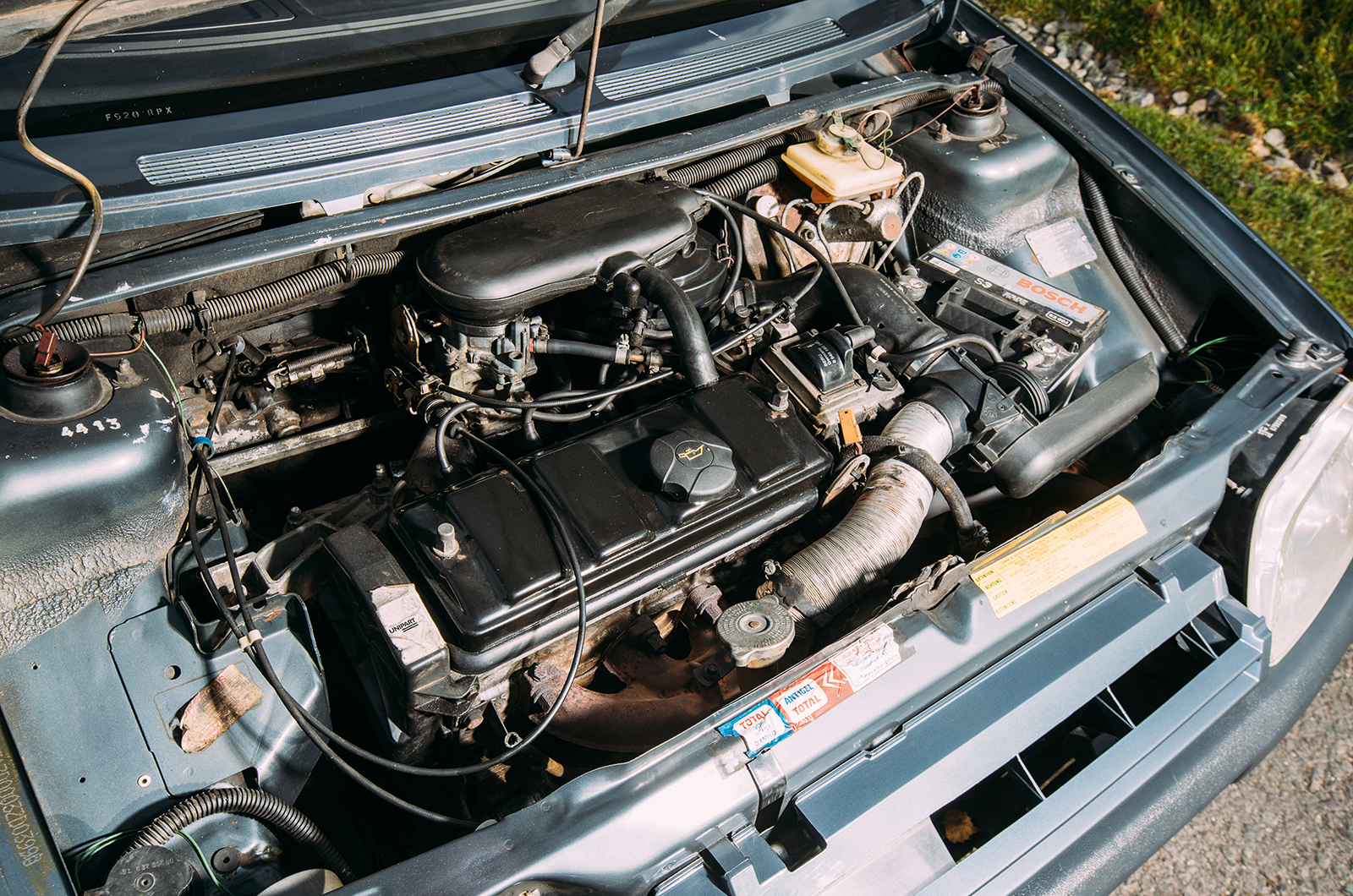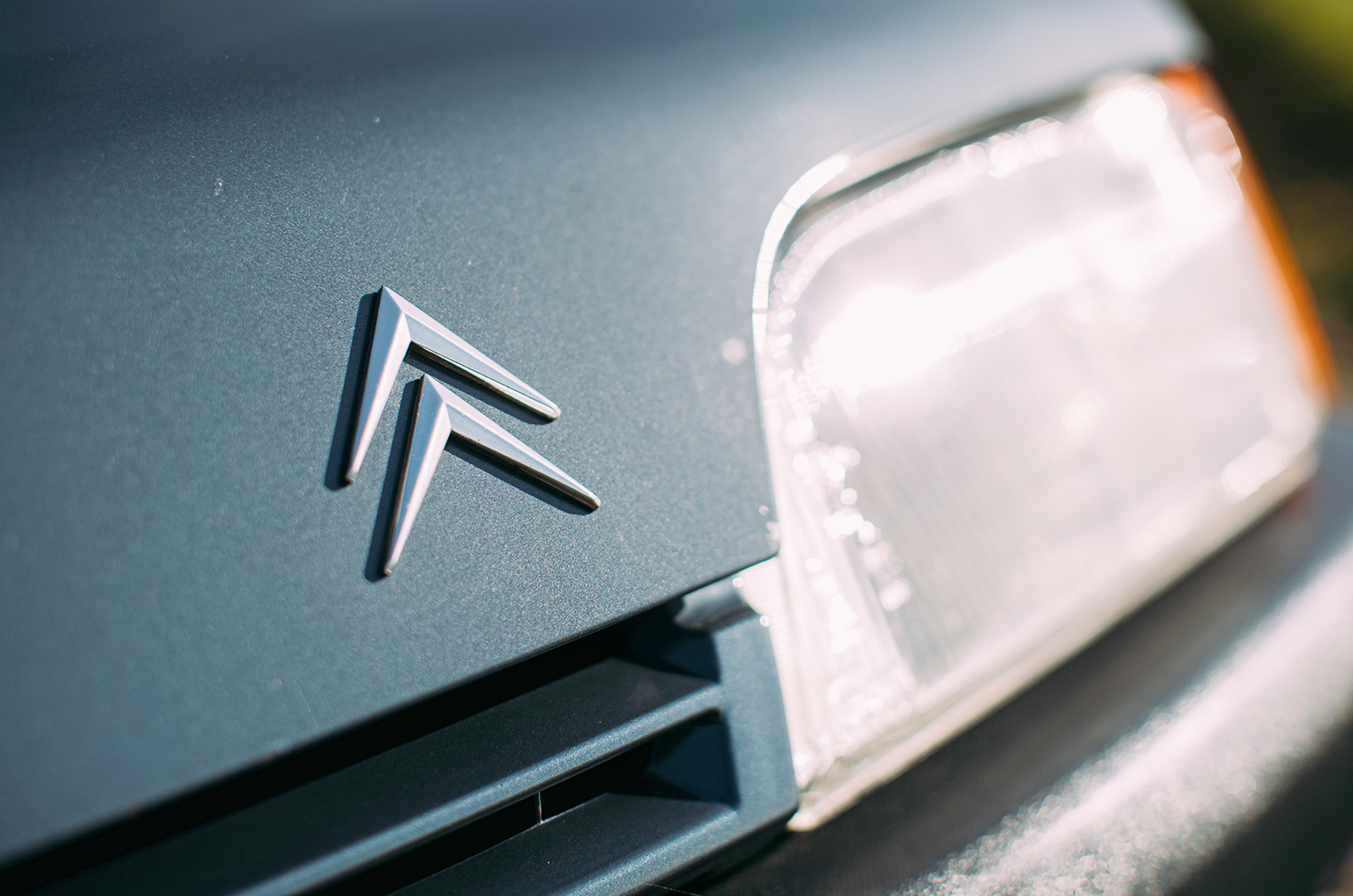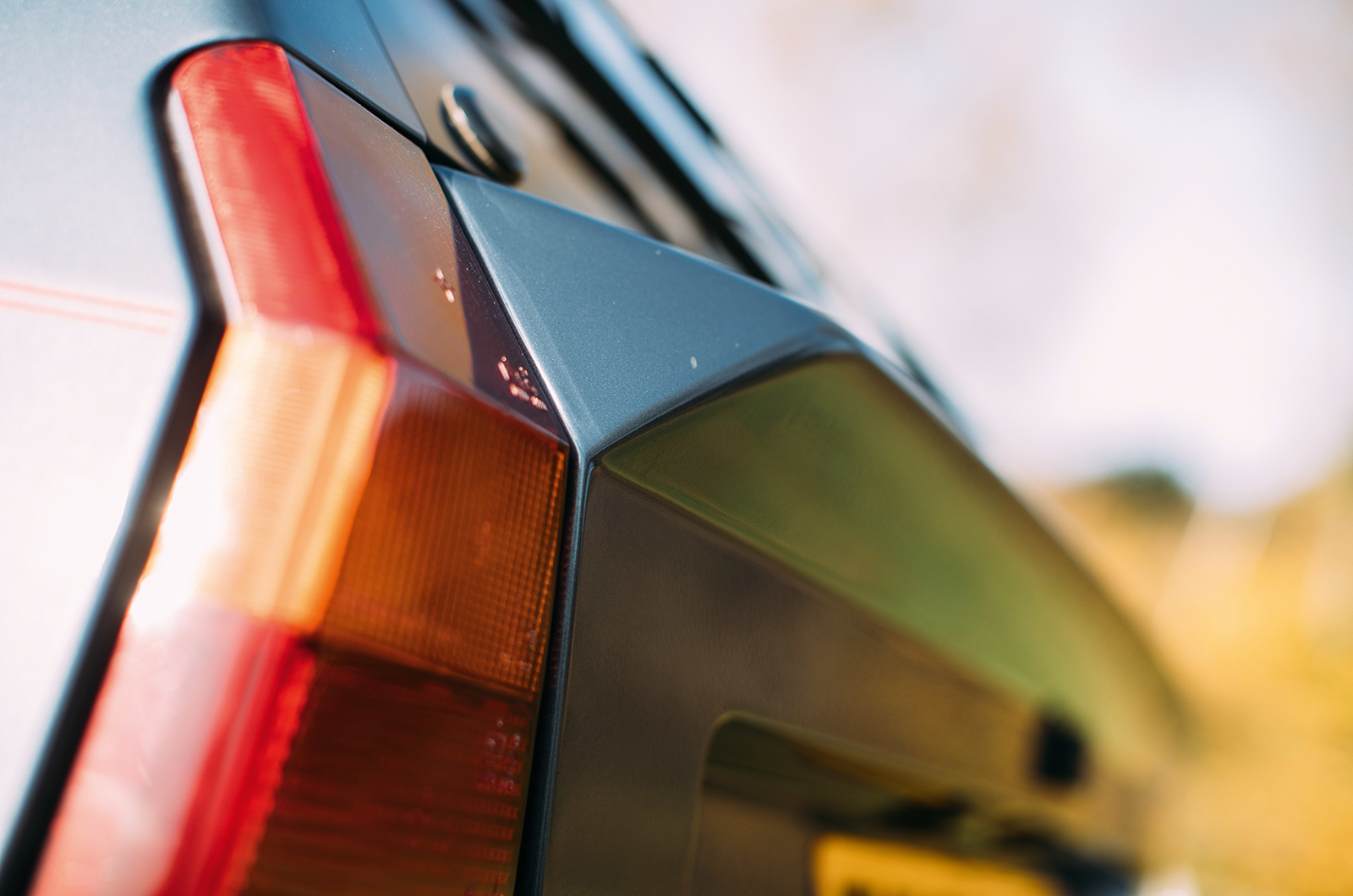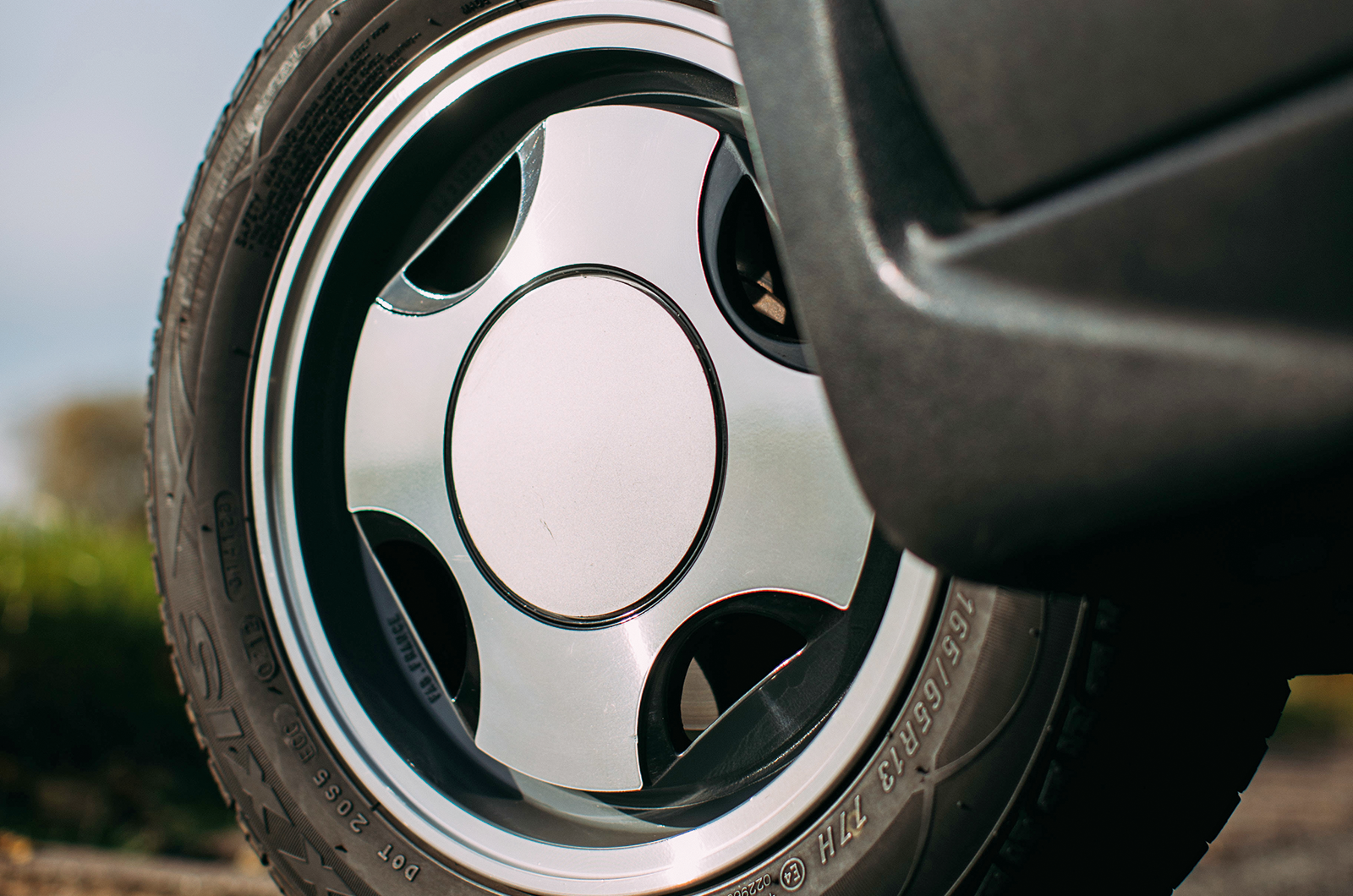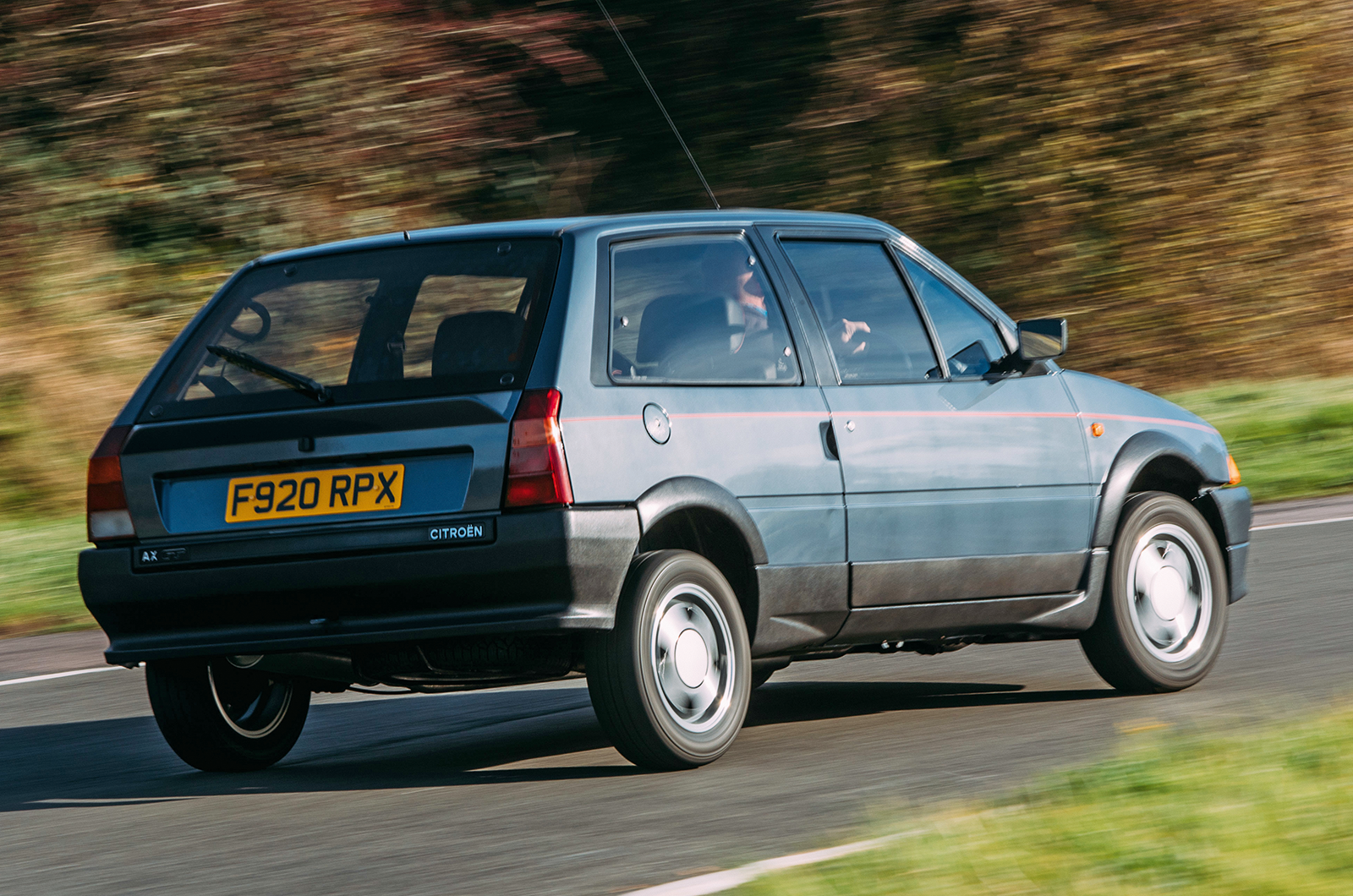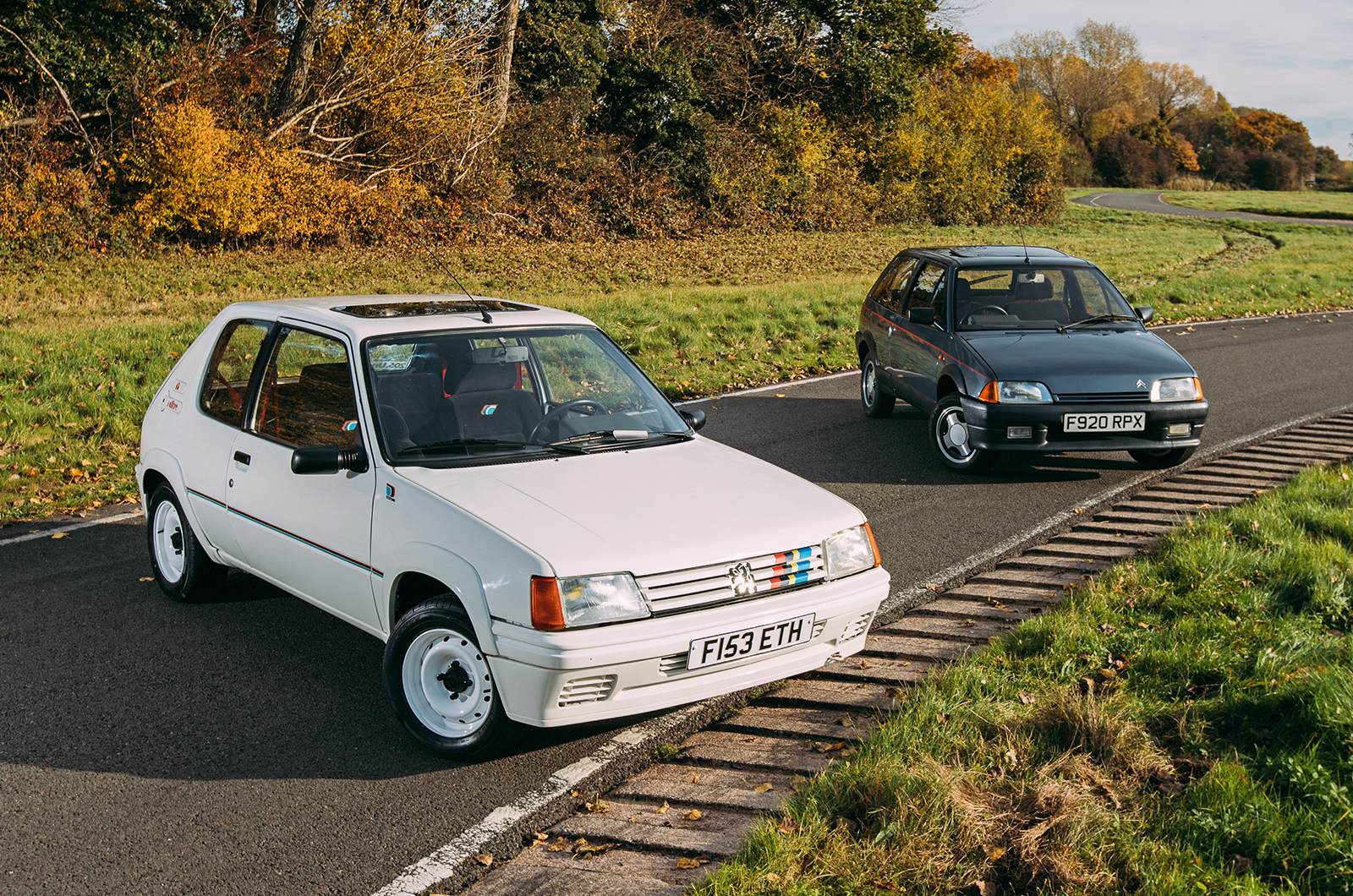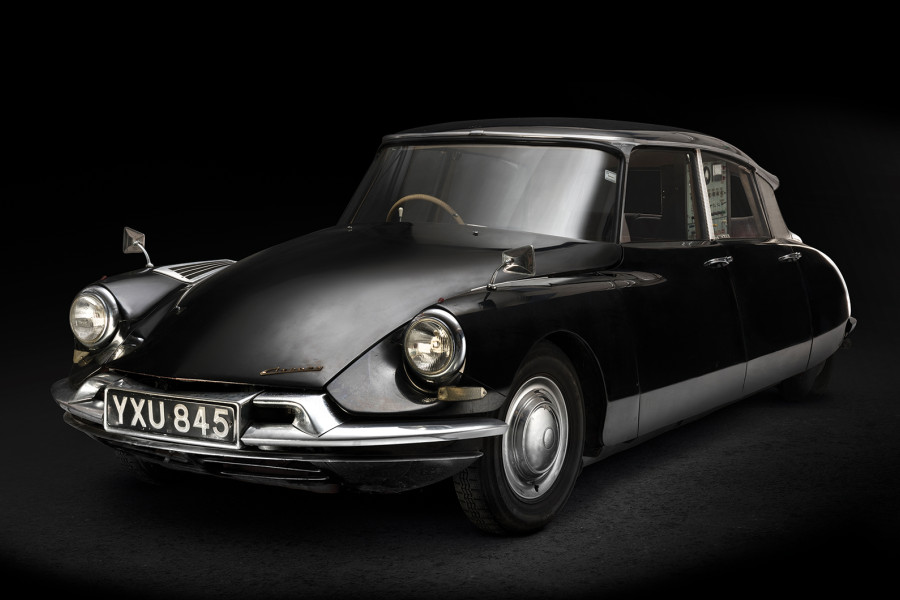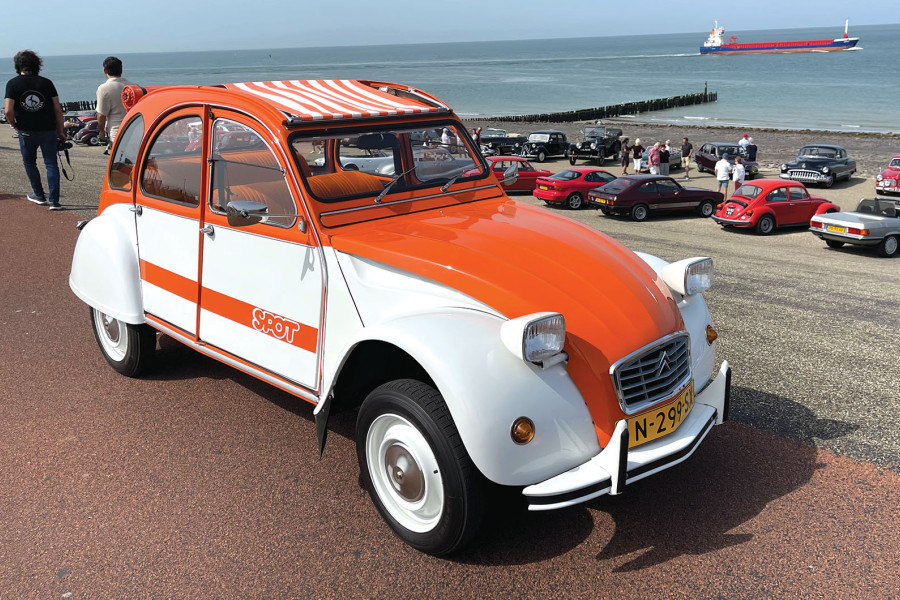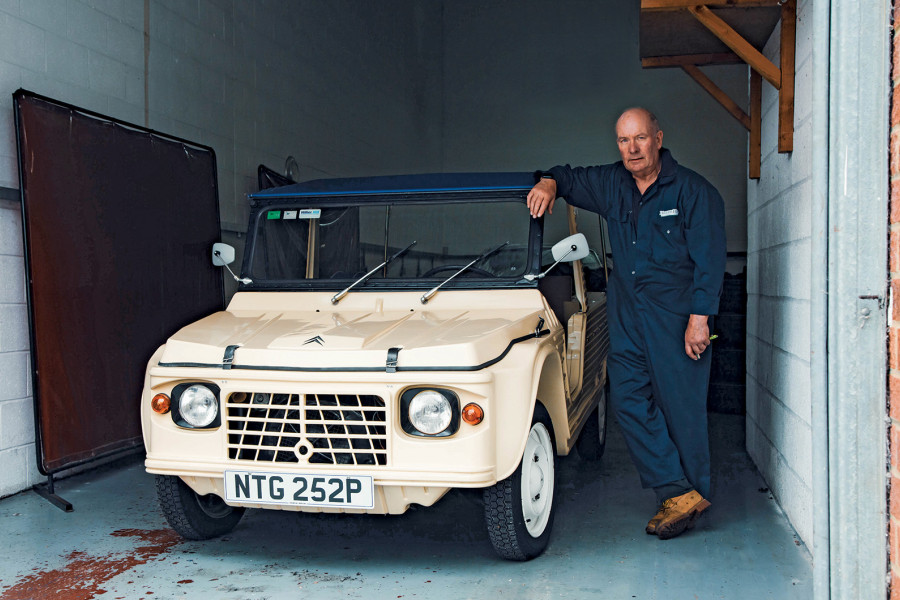These platforms represented a golden era in making humdrum cars entertaining, basically by not treating the driver as an idiot, but it’s interesting that their behaviour is retrospectively branded ‘dangerous’ by the same titles that raved about them when they were new.
The factory option alloy wheels have been on this Citroën AX GT from new
Yet that very behaviour generates their appeal, and dates them at the same time.
Do we condemn Frazer Nashes because they corner sideways as a design feature?
You could argue that an AX Sport might have been a closer comparison to the Rallye, but try finding one.
The last one advertised was asking £12,650 – about the value of ‘our’ 205 Rallye.
The Citroën leans much more on its supple suspension, but doesn’t feel quite as skittish as the Peugeot
There’s no ‘which is better?’ here.
They are fascinating examples of what thoughtful French philosophy and engineering produced to delight keen drivers when all Ford could manage was pushrods and beam axles in the XR2, and they are related if not actually descended.
That said, the 205 is the ‘best’, of course – in keeping with its slightly naughty looks, it’s rawer, stiffer, rarer and rapidly becoming more collectible than an RS 2.7 Lightweight.
We reckon that there are just 11 ‘proper’ TU24 205 Rallyes in the UK and some of those are competition cars.
But the AX is a surprise: as swift in practical terms, super comfortable and probably even harder to find in standard condition.
So what I really want is a GT with the Rallye’s ‘proper’ twin-carbed 1.3.
An AX Sport, in fact.
Images: Malcolm Griffiths
This was first in our January 2017 magazine; all information was correct at the date of original publication – including all quoted prices
Factfiles
Peugeot 205 Rallye
- Sold/number built 1987-’92/30,111
- Construction steel monocoque
- Engine all-alloy, sohc 1294cc ‘four’, with two twin-choke carburettors
- Max power 102bhp @ 6800rpm
- Max torque 89lb ft @ 5000rpm
- Transmission five-speed manual, RWD
- Suspension: front MacPherson struts rear trailing arms, torsion bars, telescopic dampers
- Steering rack and pinion
- Brakes ventilated discs front, drums rear, with servo
- Length 12ft 2in (3708mm)
- Width 5ft 2in (1572mm)
- Height 4ft 3in (1295mm)
- Weight 1742lb (790kg)
- 0-60mph 9.6 secs
- Top speed 118mph
- Mpg 30
- Price new £7810
Citroën AX GT
- Sold/number built 1988-’92/c2,400,000 (all)
- Construction steel monocoque, with plastic tailgate
- Engine all-alloy, sohc 1360cc ‘four’, with twin-choke carburettor
- Max power 85bhp @ 6400rpm
- Max torque 86lb ft @ 4000rpm
- Transmission five-speed manual, FWD
- Suspension: front MacPherson struts rear trailing arms, torsion bars, telescopic dampers
- Steering rack and pinion
- Brakes discs front, drums rear, with servo
- Length 11ft 7in (3531mm)
- Width 5ft 3in (1600mm)
- Height 4ft 4¾in (1340mm)
- Weight 1592lb (722kg)
- 0-60mph 9.2 secs
- Top speed 112mph
- Mpg 32.5
- Price new £7399
Enjoy more of the world’s best classic car content every month when you subscribe to C&SC – get our latest deals here
READ MORE
Feisty four-pots: Peugeot 306 Rallye vs Honda Integra Type R vs Ford Racing Puma
Future classic: Suzuki Swift Sport
Your classic: Volkswagen Golf GTI
Paul Hardiman
Paul Hardiman is a regular contributor to – and former Deputy Editor of – Classic & Sports Car
